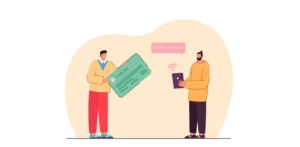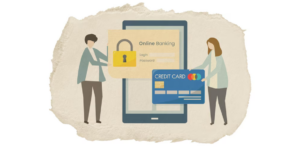
In the digital age, online payments are the lifeblood of business transactions. Choosing an appropriate payment method is important, as it determines your transaction costs, processing time, ease of use and the security of payments, along with other features that determine the quality of the customer experience. There are several options to make electronic payments, but the some of the most popular are ACH transfers, paying with a credit card, and e-checks.
Every method of payment comes with its own pros and cons, which tends to make it more or less advantageous for specific purposes and customer tastes. ACH payments have low fees, and they work great for recurring transactions, but they can be slow. Credit cards are instantly authorized an have broad acceptance, but their processing fees are higher. With an e-check you get both, a safe and convenient paperless alternative to paper checks.
This guide breaks down the advantages, disadvantages and ideal scenarios for ACH, credit cards and e-checks to assist you in choosing the right payment solution for your business.
What Is ACH Payment?
ACH refers to Automated Clearing House, a network based in the United States that transfers money electronically between bank accounts. It is popular for direct deposits, wages and salaries, and more, among others. The ACH network is overseen by NACHA (National Automated Clearing House Association) and is a secure, dependable, and inexpensive method for transactions.
How ACH Works?
An ACH payment starts when the payer (customer) and/or the payee (merchant) starts a transfer. The request is routed through an originating depository financial institution (ODFI) to the ACH operator, which is often the Federal Reserve or The Clearing House.
Transactions are batch-processed and not real-time. The ACH operator sends the transaction to the Receiving Depository Financial Institution (RDFI) — the bank of the receiver. The money is then debited from the sender and credited to the receiver, typically in 1 to 3 business days. A few banks have same-day ACH now, but it is not available at all banks.
Typical Fees & Costs
There are several key benefits of ACH payments with cost being one of the most important. Unlike credit card payments, which often incur a percentage-based fee of the transaction itself, ACH relies on a flat fee, which can range from $0.20 to $1.50 per transaction and even per batch. A few may also levy monthly access fees, and it’s worth noting that ACH is among the cheapest ways to send electronic payments—particularly for high-dollar or ongoing transactions.
ACH is perfect for those businesses who want to reduce transaction fees, and don’t need to settle funds instantly.
What Is a Credit Card Payment?
Customers have the option to pay by credit card with cards from any major credit card issuer such as Visa, MasterCard, American Express or Discover. When a customer makes a credit card purchase, he or she is borrowing the money from the card issuer in exchange for paying it back later. The issuer pays the merchant on the customer’s behalf, and the cardholder ultimately pays back the issuer — typically with interest, if the balance isn’t paid in full.

How Credit Card Payments Work?
The process for payment by credit card comprises three major stages:
- Authorization – The card is swiped, tapped or entered on-line. The issuer authorizes or denies the transaction in real-time, based on available credit.
- Clearing – The details of the transaction are transmitted via the card network to the issuer for authorization.
- Settlement – Issuer pays the funds into the merchant’s account, typically as 1 and 2 days following the transaction.
It’s this quick, effortless, and frictionless that makes credit cards such a hit for both brick-and-mortar and online purchases. Hence, businesses are integrating such payment processors.
Typical Fees & Costs
Credit card processing is more expensive than ACH or e-checks. Merchants pay a percentage of the transaction value, typically 1.5%–3.5%, plus a fixed per-transaction cost ($0.10–$0.30, for instance).
There are several things that the fee depends on:
- Card type (rewards cards and Amex will often cost more)
- Volume of your transaction (if your volume is high this might be below the standard rates)
- Processor (some have tiered or flat-rate pricing)
Credit card payments are expensive, but they’re quick, easy to use, and widely accepted — so most businesses opt for them.
What Is an E-Check?
Echeck is the online version of the traditional paper check. It enables businesses to accept electronic payments from customers’ bank accounts. While it uses the ACH network, it is initiated using check details — making it perfect for businesses that are looking for the comfort of checks and the speed of electronic options.
How EChecks Work?
To process an echeck the customer supplies the routing number and account number and authorizes the transaction (most records are electronic, meaning a customer may be providing the information via a web form or signing it digitally). After authorization, the merchant begins an ACH debit on the customer’s account.
While a credit card payment is nearly instant, the e-check transaction will generally take 3-5 business days to process. Although the lag time is long, they are helpful for larger payments, recurring billing, and B2B transactions for which traditional checks are surprisingly common.
Typical Fees & Costs
E-checks are often cheaper than credit card payments. Generally, providers charge a simple per-transaction fee, often of $0.25 to $1.50, which makes them very cost-effective for larger payments.
Another one, is that they are far less risky in terms of chargebacks compared to drafting funds directly from a credit card. Disputes can still occur, but they’re rarer and often resolved through the banking system.
E-checks provide a neutral middle ground — less costly than cards, more versatile than an ACH-only system, and a form of technology familiar to businesses and consumers.
Pros and Cons of ACH Payments
Pros
- Lower transaction fees
ACH transfers often cost less than credit card payments. Most processors charge a flat fee (e.g., $0.20 to $1.50), which is ideal for recurring or high-value transactions. - Ideal for recurring billing
ACH is commonly used for subscriptions, memberships, and B2B payments. It supports automated billing schedules with fewer processing issues. - Reduced risk of chargebacks
ACH payments have fewer chargeback cases compared to credit cards, especially for verified customers. This helps reduce fraud-related losses. - Direct bank-to-bank transfers
ACH removes intermediaries like card networks. This improves security and processing transparency, particularly for invoice-driven businesses. - Supports large payments
Since there’s no credit limit, ACH is great for bulk payments, payroll, tuition, rent, and vendorpayments.
Cons
- Slower processing times
ACH transfers take 1–3 business days to settle. This delay may not suit businesses needing instant order fulfillment. - Limited international use
ACH is primarily a U.S.-based network. Cross-border payments usually require wire transfers or card-based systems. - Potential for failed transactions
Insufficient funds or incorrect account info can lead to returned payments, causing delays and extra fees. - Requires bank account verification
To reduce fraud, many businesses use micro-deposits or instant verification. However, this step can increase customer friction. - Not always supported by all platforms
While growing, ACH support isn’t universal among ecommerce platforms and SaaS tools. Integration may require additional setup.

Pros and Cons of Credit Card Payments
Pros
- Fast, near-instant payment processing
Credit card transactions are approved or declined in seconds. This speeds up checkout and improves the customer experience. - Widely accepted by consumers
Most customers already own credit or debit cards, making this method convenient and expected—especially for online purchases. - Chargeback protection for consumers
Cardholders can dispute fraudulent or unauthorized charges. While this adds protection for consumers, it also builds trust in your store. - Supports contactless, online, and in-person payments
Credit cards work across multiple platforms—making them ideal for omnichannel businesses.
Cons
- Higher processing fees
Fees typically range from 1.5% to 3.5% per transaction, depending on the card type and processor. This can cut into profits, especially for low-margin items. - Risk of chargebacks and fraud
Chargebacks can result in lost revenue and added fees. Some chargebacks are legitimate, but others stem from “friendly fraud.” - Requires PCI compliance
Merchants must follow Payment Card Industry (PCI) DSS standards to handle credit card data. Non-compliance risks heavy penalties. - Limits on transaction sizes for certain merchants
Some processors place caps on high-value transactions, especially for newer or higher-risk businesses.
Pros and Cons of E-Checks
Pros
- Lower fees than credit cards
E-checks typically charge a flat transaction fee (often under $1), making them cost-effective for large payments. - Suitable for large payments
Ideal for high-ticket items like rent, tuition, or business invoices—where credit card fees would be substantial. - Less fraud risk than credit cards
E-checks involve direct bank account debits, which are less prone to chargebacks and fraud. - Good for customers without credit cards
Some buyers prefer paying directly from their bank account, especially those who avoid credit.
Cons
- Longer clearing time (3–5 days)
Unlike instant card payments, e-checks may take up to five business days to process—potentially delaying order fulfillment. - Requires customer to provide sensitive bank info
Customers must share routing and account numbers, which may deter some due to privacy concerns. - Some customers wary of sharing bank details online
Lack of trust or knowledge about e-checks can lead to abandoned checkouts. - Potential for returned checks/failed payments
If funds aren’t available, transactions can bounce, leading to fees and delays.
Use Cases for ACH, Credit Cards, and E-Checks

A. When to Use ACH
ACH is great for recurring payments and high transaction values. It’s commonly used in:
- B2B payments: ACH is often favored by the businesses that pay vendors or contractors, because it offers relatively low fees and can handle large payments.
- Payroll and direct deposit: Companies rely on ACH to transfer paychecks into employees’ accounts at predetermined times.
- Recurring payments and subscriptions: From gyms to SaaS companies to utility companies, ACH is used for ongoing monthly billing.
- Utility and mortgage payments: Because these are scheduled payments, ACH’s uninsured small fees and dependability are valuable.
If speed isn’t a priority and cost saving and automation are essential, ACH is a good option.
B. When to Use Credit Cards
Credit cards are good for consumer-facing transactions that value speed and convenience:
- E-commerce and retail sale: Shoppers demand quick checkout and immediate confirmation of sale.
- Fast one-time purchases: Good for online stores, restaurants, and digital goods.
- Customer rewards and cashback offers: A lot of customers prefer to use cards in order to earn points or cashback rewards.
- Travel and hospitality: Credit card holds and authorizations are a critical part of business for hotels, airlines and rental companies.
Credit cards are flexible, process instantly, and come with consumer protections such as chargebacks.
C. When to Use E-Checks
E-checks work well when the customer prefers bank-based payments or when fees matter more than speed:
- Big invoices/payments: E-checks are an affordable way to process high-value payments.
- Government and non-profit payments: These organizations tend to like check-based workflows modified for digital use.
- Businesses with customers who prefer bank payments: Especially older clients or those without credit cards.
- When credit card fees are too high: E-checks can save on tuition, medical bills and donations.
E-checks provide a cheaper, more secure option for businesses willing to wait a few extra days.
How to Choose the Right Payment Method for Your Business?
The ideal payment option is determined by your business model, your customer base, and your business needs. Here’s how to make the right choice:
1. Assess Transaction Volume and Size
If your company does high-transaction and low-dollar-volume business (like ecommerce) then credit cards are potentially a good choice even with the fees. For low-volume, high-dollar transactions (for example, B2B services), ACH or e-checks are more cost-effective.
2. Consider Customer Preferences and Habits
The ways in which you accept payments need to match the way your customers want to pay. To date, most consumers prefer using credit cards for the speed, convenience, and rewards that they offer. But for higher payments, some want the trust and ease of e-checks or ACH. Multiple options make it a more pleasant customer experience.

3. Balance Cost, Speed, and Risk Tolerance
Credit cards are also quick and easy, but with higher fees and potential risks for fraud. ACH is less expensive and more secure but slower. E-check has low fees and is a good option for larger payments but it takes around 3–5 days to clear. Decide what’s more important to you — speed, savings or security.
4. Ensure Compliance with Security Standards
And, whatever payment option you select, remain in compliance. PCI DSS is required for credit card transactions, while NACHA Regulation is used for ACH and e-check transactions. If you’re not, you’re exposing yourself to risk from the standpoint of the law, and you could be fined in case of a data breach.
Conclusion
There is no one size fits all payment method. All of these options — ACH, credit cards, and e-checks — have their own advantages and disadvantages. It’s these differences that you’ll need to be aware of so you can make educated decisions on what works best with your pricing structure, customer expectations, and how much of a risk you want to take on. Keeping an eye on your payment strategy helps make sure that you’re not losing customers or spending more than you have to. And, above all else, have security and compliance at the forefront in everything you do. Whether you are running payroll or processing e-commerce transactions, a trusted and effective payment system is essential for your long-term growth and essential for maintaining customer confidence.
Frequently Asked Questions
- Which payment method is cheapest?
ACH and e-checks generally cost less than credit cards, especially for large transactions. - Are e-checks secure?
Yes, e-checks use bank-level encryption and the ACH network. However, customers must feel comfortable providing bank details. - Can I accept credit cards without PCI compliance?
No. PCI compliance is required for any business that processes, stores, or transmits credit card data. - How long does it take for ACH payments to clear?
ACH payments usually settle within 1 to 3 business days, depending on your bank and the transaction type. - Can customers dispute ACH payments?
Yes, but ACH disputes are less frequent and more limited than credit card chargebacks. Businesses still need to keep proper authorization records.